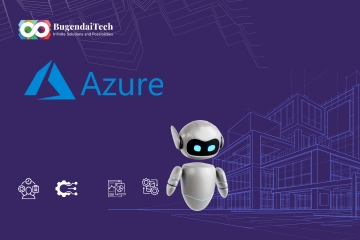In the world of web development, the concept of server-rendered UIs has been gaining traction due to its ability to deliver fast and dynamic user experiences. React Server Components, a new addition to the React ecosystem, aims to bridge the gap between server-rendered and client-rendered UIs, enabling developers to build highly interactive and performance-oriented applications.
This blog post will explore React Server Components, their benefits, and how to leverage them to create dynamic server-rendered UIs.
React Server Components bring the best of both worlds by combining the power of server-side rendering with the flexibility and interactivity enhancement of client-side rendering. With React Server Components, developers can now create dynamic server-rendered UIs that deliver an enhanced user experience, improved performance, and reduced JavaScript bundle sizes. We will discuss their advantages, such as improved performance, reduced bundle sizes, enhanced search engine optimization, and simplified development.
Additionally, this blog will guide you through the process of setting up a React project that supports server-side rendering and demonstrate how to create and render server components. By the end of this blog post, you will have a solid understanding of React Server Components and be equipped to start building dynamic server-rendered UIs with React.
So, let us dive in and explore the world of React Server Components, a game-changing technology that opens up exciting possibilities for building fast, dynamic, and highly scalable web applications.
What are React Server Components?
React Server Components is a new feature introduced by the React team that allows developers to build UI components that can be rendered on the server and streamed to the client. Unlike traditional client-rendered React components, React Server Components execute on the server and send only the necessary updates to the client, resulting in faster initial page loads and improved performance.
What are the benefits of React Server Components?
React Server Components offer several advantages over traditional client-rendered React components. Let us delve into some of these benefits:
- Improved Performance: React Server Components significantly reduce the time it takes to render the initial page by executing on the server. This results in faster page loads and a more responsive user experience, especially for users with slower network connections or less powerful devices.
- Reduced JavaScript Bundle Sizes: With React Server Components, the server takes care of rendering the components and sending the updates to the client. As a result, the JavaScript bundle sent to the client is smaller, reducing the load on the client-side and improving performance.
- Enhanced SEO: React Server Components enable search engines to index the content effectively by rendering components on the server. This enhances your applications search engine optimization (SEO) and makes it more discoverable to users.
- Simplified Development: React Server Components leverage the familiar React programming model, making it easy for developers to transition from client-rendered components to server-rendered components. This allows for code reuse and simplifies the development process.
Getting Started with React Server Components
To start using React Server Components, you must set up a project supporting server-side rendering. Here is a step-by-step guide to getting started:
- Set Up a React Project: Begin by setting up a new React project using your preferred toolings, such as Create React App or Next.js. Ensure that server-side rendering is enabled in your project configuration.
- Define Server Components: Create server components by extending the ReactServerComponent class. These components will be executed on the server and sent to the client. Define the components rendering logic within the server component, including any data fetching or processing.
- Render Server Components: In your server-side rendering code, use the ReactDOMServer API to render the server components and generate the HTML string to be sent to the client. This can be done using the renderToString or renderToNodeStream methods.
- Stream Updates to the Client: Once the initial server-rendered HTML is sent to the client, subsequent updates can be streamed incrementally using the ReactDOM.hydrate method. This allows for a faster and more interactive user experience.
- Handle Client-Side Interactions: React Server Components can handle user interactions on the client-side using event handlers and state updates, just like traditional client-rendered React components. These interactions trigger updates that can be sent back to the server for processing.
Conclusion
React Server Components introduce a powerful new approach to building dynamic server-rendered UIs with React. By leveraging server-side rendering and incremental updates, React Server Components provide improved performance, reduced bundle sizes, enhanced SEO, and simplified development. Developers can create highly interactive applications that deliver fast, engaging user experiences by adopting React Server Components.






Comments